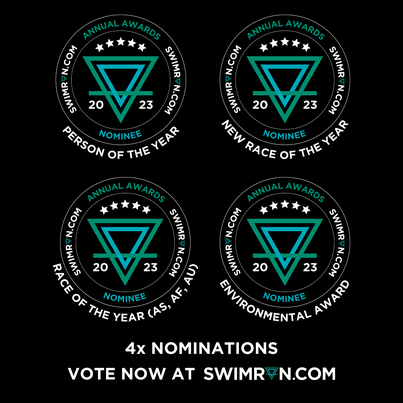Have you heard of a swimrun?
If you’re thinking of the usual run-swim-run or aquathlon (one run, one swim) event, you’re on the right track, but a swimrun takes this to the next level.
In this article, we’ll run you through what a swimrun is, where it originated and how you can get involved.
What is a swimrun?
A swimrun (spelt in one word) is a multiple-stage adventure race that involves participants running and swimming over a race course that includes multiple cross-country, trail or path runs and open-water swim stages without stopping in between.
What defines a Swimrun is that it is always carried out in the outdoors and in water with at least two swim and two run sections. As an example, the Swimrun Australia: Sydney East event has 22 legs, with 11 of swimming and 11 of running.
Swimrun has seen a rapid growth in popularity over the last ten years, especially in Nordic countries.
Typically participants don’t change clothing in transitions as they do in other multi-sports such as triathlon.

Participants usually start a swimrun race with a wetsuit, shoes, pull buoy, paddles, swim cap, goggles, and whistle. Some events also mandate the use of a tether and tow float.
All equipment used by participants throughout the race has to be carried to the finish line. Essentially, what you start with you finish with.
Swimrun is not all about how good of an individual athlete you are but rather how good you can work in a team of two as you can never be more than 10m apart.
Swimrun events tend to favour runners as the majority of the course is made up of run legs, however, one of the great things about the format is that any one leg of the course is short enough for it to seem completely achievable.

The origin of swimrun
Swimrun first came to life in 2002 from a drunken bet, when Anders Malm from Sweden and owner of Utö Värdshus hotel in Stockholm was having a late-night drink at the bar with his friend Janne Lindberg and his staff the Andersson brothers.
The bar was overlooking the Stockholm archipelago, a scattering of islands in the sea off Stockholm.
On the bar napkins in front of them was a map of the 75km Stockholm archipelago. They thought it would be a good idea to run and swim the length of the island chain swimming from island to island and running over each one. The course would cover a total distance of 75km with 10km of swimming involved.
So they challenged each other to swimrun the length of the island chain but with a couple of rules to make it fun and interesting.

The main rule was that they had to pass through three different restaurants on the islands between the start and finish. The last team at each restaurant had to drink or eat and pay what the team ahead of them had ordered for them. Then the last team of two to the Sanhamn also had to pay for the hotel, dinner and drinks.
They set out the next day and the race took 28 hours and by the time they arrived at Sandhamn, they were all too tired to party. They tried the same race again the next year and got the same result.
Fast forward to 2005 and the original four swimrunners approached experienced adventure racers, Michael Lemmel and Mats Skott to see if it was possible to make their swimrun into a commercial race.
While Mr Lemmel and Mr Skott had doubts, they went for it and set up the company Ötillö – which means “Island to island” in Swedish in tribute to the original swimrun.
In 2006, the first commercial Swimrun was run using the same course ‘the originals’ had previously done.
11 teams of two started but only two teams managed to finish within the time limits set for them, they were Petri Forsman, Ville Niemelä and Johan Hasselmark, Martin Sahlen.
Mr Lemmel and Mr Skott continued to run the event in the original format but after the first couple of years, teams learned that the only way to race is by not stopping and to keep constantly moving.
So, a new course was created from the bones of the original course. Utö became the finish line while Sandhamn became the start and the race became known as the ÖtillÖ (Island to Island).


Fast forward to today and the race is internationally recognised as the Swimrun World Championship and while today’s race may have changed slightly from the original race some things are still the same, such as staying within 10 metres of each other, helping each other through the tough challenges and terrain and enjoying the beauty of the race environment.
Since 2002 the sport of Swimrun has grown to over 500 known races in the world across 5 continents and 24 countries.
Swimrun down under
In Australia, Swimrun Australia’s Rose Bay to Watson’s Bay event became the first swimrun in the southern hemisphere, leading the way for the sport to begin its growth down under.
After a hiatus during Covid and a change in ownership, Swimrun Australia now has three events and is looking to grow this further over the next few years.

Other swimrun events, such as WA’s Swimrun Rottnest (not currently being held) and Trans Cape Swimrun soon followed.
In New Zealand, Breka Swimrun was running a popular swimrun event in the Bay of Islands and Wanaka, before going into receivership during Covid.





